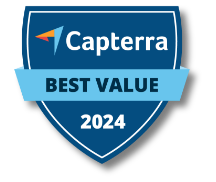The new decade has taught people how to cope up with change. Several crises have occurred that forced everyone to adopt new systems, workflows, and processes. The COVID-19 pandemic pushed operations to go remote or hybrid. Additionally, the introduction of advanced tools left entities to adopt technology, even if most users are still in culture shock and are hesitant to use these platforms.
As individuals and organizations are progressing towards a digital society, it is important that nothing is left behind in the old times — everything must adjust to the changing times, even practices such as governance. To better manage a team or organization towards success in the digital age, implementing modern governance must be a key priority for leaders.

What is modern governance?
Modern corporate governance is the system of policies, regulations, and processes powered by technology that directs and controls an organization or company. Generally, governance involves all the interests of the primary stakeholders — the board, shareholders, investors, employees, suppliers, customers, the government, and the community. Moreover, it also presupposes the environmental, ethical, corporate, and risk management initiatives of an organization.
Modern governance is said to be the governance of today, for almost everything is shifting to digital. This practice being modernized — digitalized — definitely has modified the relationships, processes, and focus of the management. How the board of directors and the senior management plan and decide on the direction of an organization impacts its governance.
Good modern governance accounts for the goals, transparency, accountability, security, and welfare of the organization and the society by complying with the laws and human rights. Practicing good governance can bring profit, company trust and loyalty, and success. Inappropriate modern governance can result in bad company reputation, dismissal of stakeholders, technological backfires (such as cyber threats), and ultimately, financial loss.
In the digital workplace where directors, administrators, and employees are either working remotely or in a hybrid setup, modern governance has been important more than ever — where flexibility and agility are advantages while security and costs are potential risks.
The Key Principles of Modern Governance in the Workplace
Exercising good modern governance in the digital workplace puts a priority on workforce welfare, corporate data, and the future of the organization, all while accounting for the impact of digitalization in the workplace. The key principles of modern governance in the digital work setup include innovation, collaboration, transparency, accountability, and cybersecurity.
Innovation in the Processes
Transitioning from conventional to digital processes is a gigantic leap for most organizations. It is a responsibility for leaders to alter processes according to the demands of the present technology. The digital workplace then requires boards and employees to acquire and embrace digital skills.
Digital skill sets vary per organization or department. However, leaders are obliged to understand the digital issues, such as data security, analytics, and databases, in order to direct the team’s actions and workflows. Whether they are hesitant to gain new skills because of their unfamiliarity, leaders need to recognize and address the digital skills gap.
In innovating the operational and managerial processes, it is important to take into account its efficiency for the employees, whether they are working remotely or in-office. A hybrid workplace calls for digital collaboration processes that provide effective communication and ownership of tasks among the team members.
Gone will be the days of physical huddle rooms and printed files, for digital software will replace the way teams collaborate and operate. However, it is of utmost importance that leaders ensure all employees have access, can manage, and are accountable for the digital tools and data they work on.
Collaboration in the Digital Workplace
One of the main pillars of every workspace — big or small, physical or remote — is collaboration. Bridging the remote and physical work environment is essential in connecting team members to brainstorm and work together. In the United States alone, 70% of the private companies are already implementing hybrid workplace policies, as a result of 53% of employees opting to work from home even with the reopening of most offices. That is why it is needed to redesign the collaboration space in a hybrid setup.
Though the hybrid workplace has been assumed as the ideal work arrangement of today’s circumstances, it still poses exclusivity. Distance bias has been a recurring phenomenon experienced by organizations with remote work setups. Remote employees tend to be overlooked by the management as they favor in-office employees who work closely in space with them.
The progress brought by the digital age must also be progress in business values. Critical movements such as gender and racial diversity in the workplace must be fostered in furthering collaboration. A hybrid workplace banked on modern governance should ensure that the collaboration space is flexible and inclusive to all employees, regardless of their gender, language, capabilities, and work setup.
Digital solutions such as governance software can provide features that empower collaboration, productivity, and efficiency while providing access to all members. A good modern governance program ensures everyone can be seen, heard, and can collaborate in the digital workplace.
Upholding Transparency, Accountability, and Compliance
Running a hybrid workplace is similar to running any other workplace. It requires instilling the pillars of governance, namely transparency, accountability, and compliance. By upholding these pillars, the integrity of the company can be empowered and secured.
Companies and organizations are directing their efforts towards ensuring these principles are met. For instance, they are now putting a priority on transparency by encouraging open communication among the team. Plans, decisions, and action items should be accessible to the team members. Having a single transparent space upholds record-keeping and searchability of pertinent documents. This not only keeps every member on the same page, but also empowers socialization, support, and genuineness within the team. Transparency to every stakeholder is a step to better governance.
Transparency and accountability go hand-in-hand in furthering modern governance. While accountability has been often associated with blame, it also covers not only the mistakes but also the accomplishments of the team. The key to good governance is promoting a culture of accountability within the workplace. Encouraging employees to willingly own up to their actions and the consequences, whether good or bad, could bridge the gap between goals and actions and lead to better results.

Implementing a modern governance program in the organization requires leaders and team members to positively comply with the organization’s policies, regulations, and culture. For instance, common compliance risks, such as remote employee work hours and compensation have been overlooked by organizations. By upholding compliance, companies reduce risks in the workforce and its reputation.
Fortunately, corporate governance software can ensure not only workflows being digitized and efficient, but also keeping actions and decisions in the workplace transparent, accounted for, and compliant at all times.
Focus on Cybersecurity
While organizations enjoy the benefits of adopting digital solutions in the workplace, one drawback it poses is the security risks. The common misconception is that everything that goes online is susceptible to cyber threats. However, as digitalization is now perpetual in systems and processes, what digital workplaces need is to put greater efforts into cybersecurity.
Now is the time to assess if your company’s current tools and platforms are enough to champion security and governance. For instance, collaborating using separate platforms such as conferencing through Zoom, sharing files through emails, and managing tasks through another application may not be the most secure workflow in the digital workplace. Using different platforms can only heighten the risk of data breaches and data loss.
A focus on cybersecurity put everyone, especially leaders, to be more tech-fluent. One-stop digital solutions have evolved to provide solid security features, such as access controls in documents and storage, user authentication, and end-to-end encryption that secure the organization’s corporate data while providing full ownership of the system.
Adopting Modern Governance in the Hybrid Workplace
The hybrid workplace poses changes in how governance must be exercised, especially in the shift to the digital era. The governance before may not work in the new workplace, therefore the implementation of modern governance programs is necessary to tackle the challenges of today’s workplace. How should companies then carry out governance in a changing workplace?
Governance and Agility Go Together
Similar to the traditional circumstances, governance and agility go hand-in-hand in facilitating the goals and direction of an organization. Agility is a critical competence needed by leaders to act quickly and make informed decisions that keep the organization alert and informed of the updates and trends within the industry to guide their governance programs. Governance, on the other hand, upholds innovation, collaboration, and compliance in managing resources and executing agile actions.
These two practices work together in harmony by enabling each other in preserving the management and the operations of the organization. In simpler terms, agility enables governance by making quick and data-driven decisions for the company, whereas governance breeds agility by adopting digitalization in the workplace — making processes and actions accelerated yet systematic and compliant. By transitioning to modern governance, organizations can now ensure that the challenges of the digital age can be addressed.
The Flexibility of the Hybrid Setup
The hybrid workplace empowers the employees by working either in the physical office or remotely, whichever is convenient. Such setup is banked on flexibility — another factor in creating effective modern governance programs. By switching to a hybrid workplace, the work setups, productivity tools, and communication modes must cater to all in-office and remote employees.
Additionally, flexibility in the hybrid setup can also entail a wider range of freedom for the employees in accessing and utilizing the tools and resources of the organization. As more companies are opting for remote work, the access of employees to corporate data and tools is flexible, leading to possible uncontrolled workspaces. The governance before may not be enough to cater to the needs of today’s management and workforce. Therefore, modern governance in the digital workplace must balance out flexibility and control to give employees the freedom to explore while not neglecting control and security.

Empowering your workplace with a governance software
Modern governance in the digital workplace, specifically in a hybrid setup, requires a system that upholds its principles, all while adopting digital tools that can further the employees’ experience. Banking on innovation and digital collaborative processes, modern governance must be planned, executed, and measured accurately.
A governance software, such as Convene board portal, can equip your organization with the right tools to lead, manage data, and make informed decisions in the digital age. With collaborative features made for discussion and approvals, governance software can ensure that every member — working in the office or at home — is in sync with the plans and actions of the organization. Furthermore, it allows leaders to do more by worrying less about digital risks, as it prioritizes the security of your data and resources while giving you a seamless and quality experience.
Find out more about how a secure digital solution can help you champion modern governance in the hybrid workplace.










